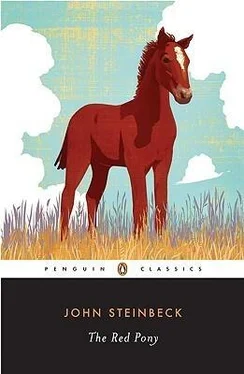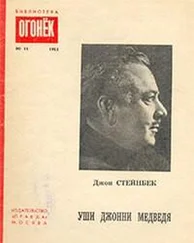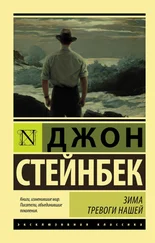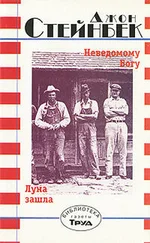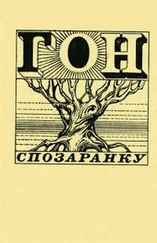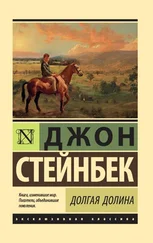It is important to understand what many students of Steinbeck’s life and works now know: that the signal influences on his early work were Donn-Byrne and James Branch Cabell, fantasists and mannerists whose writings Steinbeck himself acknowledged provided the worst possible models. But his recantation does not alter the fact, nor the likelihood that, as in all such matters, influence is a guide to predisposition. Both older writers, despite the vast differences in their personal backgrounds and materials, were products of the art-for-art’s sake movement of the 1890s, which stressed style as substance, and both sustained a disillusioned view of the present by retreating into an invented past, where they could indulge their romanticism unchecked by considerations of verisimilitude.
Their influence is most clear in Cup of Gold (1929), Steinbeck’s first (and atypical) novel, a loosely “historical” romance about the pirate Henry Morgan that is imperfectly sustained by the Grail myth. But despite Steinbeck’s abandoning the purplish prose associated with his youthful models, something of their underlying cynicism remains in much of his subsequent fiction. Moreover, the theories that would sustain his most famous works, the nonteleological philosophy in part abstracted from the wisdom of his friend Ed Ricketts, and the “phalanx” idea that underlies his most serious works of social criticism, only reinforced the nihilism essential to his early reading even as they necessitated a more “realistic” kind of fiction. Neither idea holds out much hope for individual or even communal enterprise: those of his characters who entertain some motivating errand or purpose end as versions of Don Quixote, deluded victims of their own dreams—they are versions, in short, of the senior John Steinbeck.
Because The Grapes of Wrath looms so large in his corpus, Steinbeck is thought of as a sentimentalist, another erroneous perception. Sentimentalism had been utilized in America in reform fiction ever since Harriet Beecher Stowe used it to arouse reader sympathy for Negro slaves, hitting upon a device that Steinbeck also used effectively: stressing the loving, virtuous “family” values maintained by Uncle Tom and his wife in their humble cabin. Stowe brought her readers to tears by dramatizing the anguish of family breakup and the selling of black children out of the arms of their mothers, in every instance appealing to her white, middle-class readers for whom the integrity of the family was sacred. But she was in her other works seldom a sentimentalist, establishing rather the objective tone that would be characteristic of an emerging literary realism— explicitly antisentimental in its aims. Steinbeck, at the other end of that process, would likewise use sentimentality chiefly in works that, like Stowe’s great protest romance, were constructed so as to inspire sympathy for the downtrodden. Thus in Of Mice and Men (1937), which in its account of disadvantaged and displaced farm workers is preludic to Grapes of Wrath , Steinbeck like Stowe uses the middle-class ideal of “home” to arouse pity in the reader, an emphasis shared by his subsequent and much more ambitious novel. But in neither work does Steinbeck propose solutions to the sufferings he has so sympathetically portrayed (the allusion in the title of the novella to Burns’s “To a Field Mouse” perfectly cues the balance between sympathy and inevitability), whereas Stowe pointedly wrote Uncle Tom’s Cabin in the service of abolition and the aims of the American Colonization Society. Divorced from the specific reforms of protest literature, Steinbeck’s use of sentimentality is akin to the pathos of Greek tragedy, inspiring identification with the protagonists but allowing for no remedies or relief save release through death.
In The Red Pony , where middle-class people are the chief characters and home is an often conflicted reality, not a lost or impossible hope, Steinbeck more clearly delineates his emerging thematic and stylistic norms. Much as the writer refuses to give any of the stories a positive, teleological ending, so he avoids the sentimentality that a number of the situations allow, especially regarding the suffering and deaths of animals. We need only compare these stories with Marjorie Kinnan Rawlings’s The Yearling (1938), a novel with virtually plagiaristic similarities to The Red Pony , to understand Steinbeck’s “differences” in dealing with the death of a beloved pet. Mary O’Hara’s subsequent “colt-to-horse” cycle, My Friend Flicka (1941), pulls out all the emotional stops in a story that also resembles Steinbeck’s, with the signal difference of the colt’s survival. Starting with Black Beauty (1877), by Anna Sewell (a novel written to further the work of the S.P.C.A.), the tradition in “animal stories” has been for the most part sentimental. Even such a ferocious realist as Jack London, whose stories of dogs and wolves generally steer clear of appeals to emotions other than anger—aimed at the brutal exploiters of dogs trained to obey the whims of their owners—ended the story of White Fang with his wolf-dog in the midst of a happy family of pups.
There is no anger, reformational or otherwise, in The Red Pony , except that expressed by its characters. Jody’s fury over the needless death of his pony is viewed with detachment and is related not to social issues capable of reform but simple human (and therefore unremedial) failings, establishing an authorial distance classical in its austerity. Here again, Steinbeck is bucking tradition: From Hamlin Garland’s Main-Traveled Roads (1891) to his own Grapes of Wrath , the “farm novel” in the United States usually floated a social agenda, displaying the sufferings of farmers in the grip of exploiting railroads or large land owners. In The Red Pony , Steinbeck perhaps most closely resembles Willa Cather, whose stories of Nebraska farmers avoid specific political and economic issues while emphasizing the hardships of the farmer’s life, portrayed as a grim and unrelenting struggle with natural forces, a constant test of the strengths—and weaknesses—of rural people. Yet there is an underlying optimism in Cather’s stories, while Steinbeck, once again, seems of the party of despair. “A Leader of the People,” the final story in The Red Pony , sums up that prevailing sense of loss by placing an old man’s boastfully sad recollections of a “heroic” West against the cruel indifference of his son-in-law, Jody’s hard-working but insensitive father, Carl Tiflin.
Though younger than Hemingway, Fitzgerald, and Faulkner, Steinbeck shared with them an abiding sense of decline and fall, and like the writers of the Lost Generation, he used myths to emphasize his themes of loss. First received as a photographic realist in the tradition of social protest, Steinbeck has been shown in the studies of Peter Lisca and Joseph Fontenrose to be a sophisticated manipulator of themes and situations that establish a parable-like depth to his fictions. Like Mark Twain, whose vernacular tradition he continued, Steinbeck is more “literary” than he appears at first reading. As Jackson Benson affirms and reaffirms, from the start Steinbeck’s fiction tended toward symbolic and even allegorical configurations of meaning, of which the Arthurian materials are only one aspect. It was a self-conscious quality that, during his last, post-World War II phase, became only more obvious, not more the rule. The contemporary events of the 1930s, along with Steinbeck’s experiences as a laborer in the fields of California agribusinesses, provided sufficient “realistic” flesh to cover the bare bones of symbolic meaning, but with his removal to New York and the East Coast, along with the feared encumbrances of wealth and prestige, Steinbeck lost both the ability and the materials to give his allegories sufficient heft of experience.
Читать дальше
